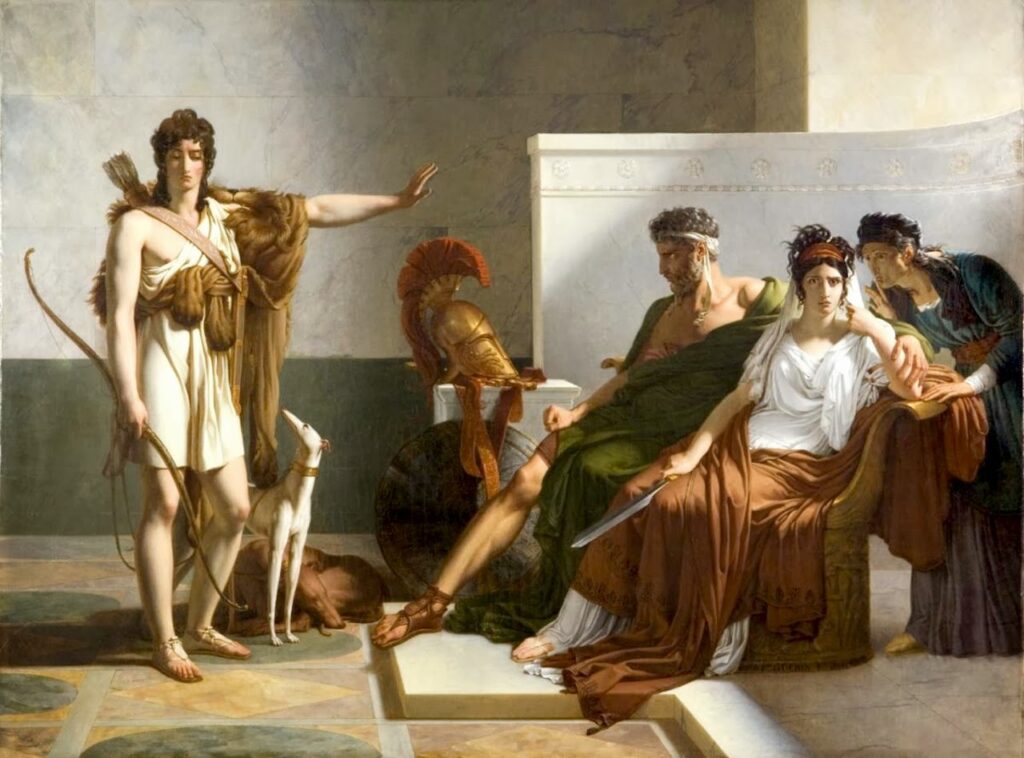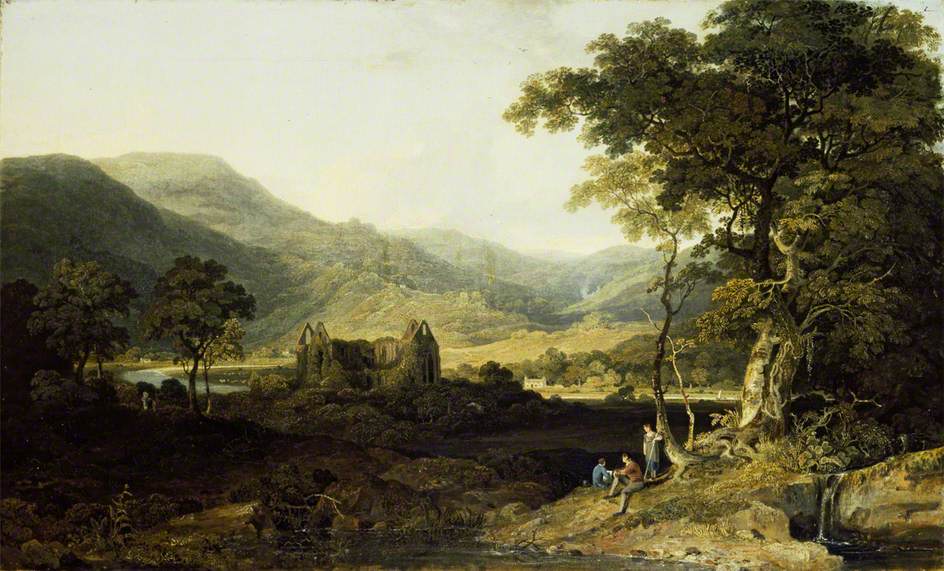Home » Posts tagged 'goodness'
Tag Archives: goodness
Hippolytus
(Ἱππολυτος)
Euripides
429 BC
(Disaster ensues when Phaedra falls for her stepson!)

The gods will have their play, and we piteous humans must suffer in double jeopardy. First, vice will eventually bring destruction, and yet we are by nature weak and prone to vice. Second, everyone is subject to fate, which is not kinder to good people than to bad. So we are doomed—we cannot be virtuous as we want to be, and so we are in trouble; and yet even if we could be virtuous we would get smacked anyway by the vicissitudes of fate! Hence Euripides’ fist-waving at the gods… yet he manages to preserve some reverence. Artemis tells us that the pious are still much more highly regarded by the gods than the impious. When the impious person suffers, the gods nod “take that!”, whereas the faithful incur their favor, which can bring some benefit. So, given our sad lot in life, it is better to be suffering and good than suffering and evil. Or that is Euripides’ line anyway. In this play we see how this web of cosmic influences plays out in the life of a chaste and honorable man destined for greatness by rights, when (through no fault of his own) his stepmother takes an improper liking to him.
Apology of Socrates
(Απολογια Σωκρατους)
Plato
4th century BC
(An innocent man delivers an inspiring speech to the court before he is executed.)

Socrates is a bit of a mystery, if you insist on being a real evidentiary hardliner. He wrote nothing himself, so we have to rely on others’ characterizations of him. Xenophon paints him as the conventional wise man of the day. Aristophanes deems his philosophizing empty and ridiculous. Plato’s conception, the fullest and most detailed, is of a man worthy of admiration, even awe, both for his intellect and his noble spirit. Plato’s Socrates seeks truth despite fashion or convention; he is imaginative, reverent, humble, perceptive, eloquent, and sharp as a razor. I’ll go with Plato, not just because his picture is most complimentary, but because Xenophon’s is simplistic (in fact it suggests that Xenophon—with all due respect—knew Socrates only casually, but wished to write as though he knew him well); and Aristophanes did nothing more than exploit a famous name, attaching it to a caricature for effect. In fact there were many philosophers in Athens who were very much like those “Sophists” Aristophanes pillories in his play The Clouds. Socrates was the most famous philosopher around at the time, and he certainly would have associated and debated with the general run of them. His was probably a household name, to be thrown about as representative of the lot of lounging jabberers even though– to one who actually listened to him– he towered above the rest.
A Sand County Almanac
Aldo Leopold
1948
(An ecologist contemplates and celebrates the land, and recommends an expansion of our moral world.)

In today’s courses on ecology, forestry, conservation, environmental philosophy or land use, three personalities are routinely introduced as the fathers of modern concern for nature, the three who first and most strongly urged us to enlarge our conception of what in this world is a proper object of moral consideration: Henry David Thoreau, John Muir, and Aldo Leopold. Contemporary American (and to some extent world) culture has been impacted by A Sand County Almanac, as by Thoreau’s Walden, to such an extent that we cannot yet begin to assess it. Nevertheless, I would argue that we as a culture have still not attended to the two main lessons A Sand County Almanac would teach us.
Lyrical Ballads, and other early poems
William Wordsworth
1785-1799
(A poetic sage takes lessons on goodness and beauty from nature.)

A man of wisdom, a poet of nature, is Wordsworth. These are the goals to which he aspires, goals that are discernable in his work from a very early age. He wrote many of his greatest poems in the years covered here, before he reached 30. Wisdom, or more specifically a yearning for and contemplation of goodness and beauty, suffuses his poetry. Thus he is keen to deliver moral advice, and almost seems to teach or prophesy rather than reflect. But it is the deepest and most profitable kind of reflection, I can almost hear him replying, whose results teach the reflector something. And since he insists in the Preface to his Lyrical Ballads that he writes each poem with a purpose, and with the intent of delivering objective truths rather than ideas that one may take or leave as a matter of preference, we must prepare for a slight didactic or pedagogical flavor now and then. For Wordsworth, though firmly against elitism in poetry, is aware of his own wisdom, and is driven to share it with others. The topics range from attitudes towards people (as in “Matthew”), to attitudes towards nature (as in “Lines Written in Early Spring”), to a straightforward exhortation to be good (as in “Goody Blake and Harry Gill”). He imparts his values on social matters as well, regarding for instance the evil of slavery (at the end of “Descriptive Sketches”), the necessity of legislated charity (at the beginning of “The Old Cumberland Beggar”), and thoughts on education (e.g. “Expostulation and Reply”).



Uncle Tom’s Cabin
December 28, 2014 / Leave a comment
Harriet Beecher Stowe
1852
(Two slaves struggle mightily: one for her liberty, the other for his integrity.)
This novel, the best selling book in the nineteenth century besides the Bible, is a remarkably forceful argument against the world’s most blatant form of widespread institutionalized violation of human rights. It is a collage of slave lives and lifestyles assembled with a thin glue of plot, all combining to urge our sympathies with the slaves and our antipathy to the injustice of their condition. It is an effort to bring free people to the realization that slaves are real persons who have the same sorts of spirits and minds as their masters, and yet they are and will always be subject to all sorts of anguish, suffering, and torture until slavery is abolished. “It is a comfort to hope,” Harriet Beecher Stowe writes in the Preface, “as so many of the world’s sorrows and wrongs have, from age to age, been lived down, so a time shall come when sketches similar to these shall be valuable only as memorials of what has long ceased to be.” We can be thankful that the author’s hope came true– the book served phenomenally well the purpose for which Stowe designed it. Testament to this are its enormous sales, the several hasty rebuttal “slavery isn’t so bad” novels, and, perhaps more than anything else, the comment of Abraham Lincoln when he met the author, calling her the “little woman whose book started this big war”.
(more…)